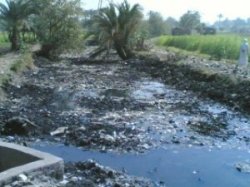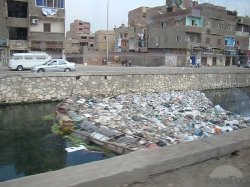Environmental Issues in Egypt
 Egypt has been suffering from severe water scarcity in recent years. Uneven water distribution, misuse of water resources and inefficient irrigation techniques are some of the major factors playing havoc with water security in the country. Egypt has only 20 cubic meters per person of internal renewable freshwater resources, and as a result the country relies heavily on the Nile River for its main source of water. The River Nile is the backbone of Egypt’s industrial and agricultural sector and is the primary source of drinking water for the population.
Egypt has been suffering from severe water scarcity in recent years. Uneven water distribution, misuse of water resources and inefficient irrigation techniques are some of the major factors playing havoc with water security in the country. Egypt has only 20 cubic meters per person of internal renewable freshwater resources, and as a result the country relies heavily on the Nile River for its main source of water. The River Nile is the backbone of Egypt’s industrial and agricultural sector and is the primary source of drinking water for the population.
Rising populations and rapid economic development in the countries of the Nile Basin, pollution and environmental degradation are decreasing water availability in the country. Egypt is facing an annual water deficit of around 7 billion cubic metres. Infact, United Nations is already warning that Egypt could run out of water by the year 2025.
 Let us have a close look at major factors affecting Egypt’s water security:
Let us have a close look at major factors affecting Egypt’s water security:
Population Explosion
Egypt’s population is mushrooming at an alarming rate and has increased by 41 percent since the early 1990s. Recent reports by the government suggest that around 4, 700 newborns are added to the population every week, and future projections say that the population will grow from its current total of 92 million to 110 million by the year 2025. The rapid population increase multiplies the stress on Egypt’s water supply due to more water requirements for domestic consumption and increased use of irrigation water to meet higher food demands.










